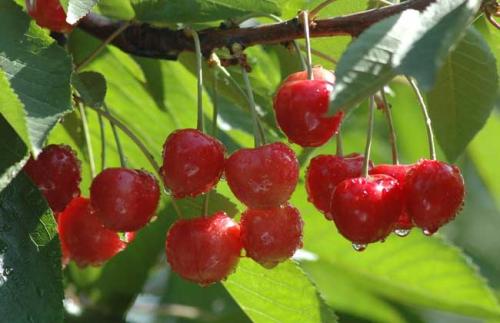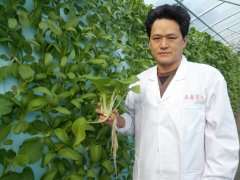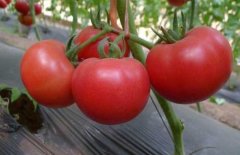What are the propagation methods of West Indian cherries? Planting time of West Indian Cherry cutting method
West Indian cherries are planted in fields, containers or gardens as seedlings. There are four propagation methods of seedlings: cutting, sowing, air striping and grafting. What are these four methods? Let's have a look!
Because of the shortcomings of single pseudo-fruiting habit, unsubstantial seeds, low germination rate, large genetic diversity, irregular seedlings and late fruiting age, sowing method is generally more commonly used than cutting method or air striping method. however, although the air striping method is easy to take root, but there are great differences among different varieties, and mass propagation is more time-consuming and time-consuming, the cutting method is still the simplest and most successful, and can preserve the fine characteristics of parents.
I. sowing method
After harvest, the West Indian cherry was crushed to remove the core, washed with water and dried in a cool place for 1-2 days before sowing. When sowing, the kernels were sowed directly in a shallow basin or 72 holes, and germinated about 10 to 30 days after sowing. The germination was faster in the high temperature period and very slow in the low temperature period. When the seedlings grow to 5-10 cm, then transplant them into a plastic soft basin. West Indian cherry seeds germinate easily but not neatly, and the seeds produced by some plants often lack viable embryos, and the germination rate is often less than 30%.
2. Cutting method
During the growth period from March to October, half-ripe healthy branches were selected, with a diameter of 0.7-1.2 cm, a length of 15-20 cm, and attached 4-6 leaves, which were inserted into river sand, vermiculite or peat soil or several mixtures were suitable for cooperative seedling bed medium. Cuttings should especially be kept moist and shaded. Rooting agent (IBA) can be used to promote hairy roots. The roots took root about 1.5 ~ 2 months after cuttage, and then transplanted after the root group grew vigorously. If the cutting method is managed properly, the survival rate will be 60-90%, especially in March or October. The rooting rate of sour species was significantly higher than that of sweet species.
3. Strip pressing method
In the use of horticultural techniques, striping is the fastest way to cultivate big trees, but the effect of West Indian cherry varieties is very different. Chen Bohui (1997) aimed at 10 sour species and 10 sweet species in Yunlin branch field of Tainan field, wrapped with water moss, wrapped with plastic cloth, and applied tightly up and down, the results showed that the sour species had 80% rooting rate one month after pressing, while the grafted sweet species only showed no Callus after 3 months of experiment.
In general, seedling producers who engage in striping breeding are striped during the growth period from March to October, cut off and planted in a soft basin container when the roots are complete after 2 to 4 months, and then moved into the field or pot planting in March to April of the next year.
IV. Grafting method
Abdominal grafting and splicing can be used, but it is seldom used.

- Prev

Non-toxic farming is water ploughing? What is the air cultivation method? what are the advantages of the planting method?
According to a report released by the United Nations, 70% of people will live in cities today in 2025. The result of high urbanization will lead to the reduction of cultivated land and environmental pollution, and then lead to the food crisis. Taiwan's new team Futian Technology (Airtree) from the planting of NASA
- Next

According to the history of tomato planting, what is the effect of how to ingest lycopene?
Have you ever heard of the history of tomato planting? The most nutritious substance in tomatoes is lycopene. So how to get lycopene from tomatoes? It is generally believed that Peruvians were the first to grow tomatoes. From the 16th century to the 17th century, it was just introduced into Europe (Xiban
Related
- The first cup of black tea in spring, the flavor and history of tea gardens in Kenya, Africa
- The computer can not only choose potatoes, but also grow tea rice. AI will grow winter oolong tea champion.
- It is not only the inflated tea bitten by insects, but also engraved with the four seasons tea in Beipu.
- The Oriental Beauty Tea Festival in Zhuxian County takes the stage at the weekend to experience the plus-size feast of oil tea.
- & quot; Oriental Beauty Tea & Exploration of Emei in Hsinchu, the hometown of quot;
- The new variety of strawberry "Tainong 1" dessert is the first choice with mellow aroma. Crimson gorgeous
- History of Tea in Taiwan: from Wild Inner Mountain to Export Tea Garden
- Two types of Taiwan Oriental Beauty Black Tea won the British three-Star Award for Childhood Tea Xiang Zhang Jiaqi changed from pilot to champion tea maker.
- Banana species and varieties: the planting history of Taiwan Xianren banana and dwarf banana is long, is banana disease resistant?
- Coffee planting Technology: Qianjie Coffee from Seedling to harvesting

